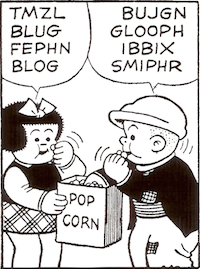Brian Wilson Reimagines Gershwin (Disney Pearl Series, 2010)
Rhapsody In Blue / Intro : The Like In I Love You : Medley: Summertime / I Loves You Porgy / I Got Plenty O’ Nuttin’ / It Ain’t Necessarily So : ’S Wonderful : They Can’t Take That Away From Me : Love Is Here To Stay : I’ve Got A Crush On You : I Got Rhythm : Someone To Watch Over Me : Nothing But Love : Rhapsody In Blue / Reprise
Playing time 39:11
The Great American Songbook is in need of all the reinterpretation it can get: one tires of the earnest, closely-miked voices and soft — no, softer — no, even softer — accompanists of the cabaret world. Brian Wilson has reinterpreted the music of George Gershwin with energy, wit, and moments of considerable beauty. He is in fine voice on this recording and, it would seem, fine spirits.
The most-hyped performances here seem to me the weakest. The two fragments of Rhapsody in Blue, for Wilson’s stacked vocals and strings, feel oddly truncated — not even all of the Rhapsody’s most familiar theme is here. On Orange Crate Art, stacked Wilsons sounded loopily beautiful. Here, they sound like someone singing in a hall of mirrors. The effect is unnerving.
The two Gershwin–Wilson collaborations (written with Scott Bennett) are a mixed bag. “The Like in I Love You” has a good melody, but its lyrics (by Wilson and Bennett) disappoint. A sample (my transcription):
Gliding in a starless sky,On “Nothing But Love,” which seems to me a slighter song, Wilson’s voice is swamped by an overly busy arrangement.
’Til we found the inner light,
Now we can duplicate the universe.
Overly busy arrangements seem to have been the order of the day in making this album. “Summertime” and “It Ain’t Necessarily So” are particularly heavy-handed, though they’re partly redeemed by the bits of incidental music that join them to the middle sections of a Porgy and Bess medley. Much more successful: “I Got Plenty of Nuttin’,” transformed into a Pet Sounds-era instrumental, with bass harmonica and timpani, and “’S Wonderful,” which evokes Frank Sinatra’s bossa nova recordings with Antonio Carlos Jobim and Wilson’s own “Busy Doin’ Nothin’.” Two more highlights: “I Got Rhythm,” reimagined in the spirit of “Fun, Fun, Fun,” and “Someone to Watch Over Me,” which becomes a second Pet Sounds outtake, with harpischord, percussion, and electric bass suggesting the textures of “Caroline, No.”
The best performance on this album is, for me, wholly unexpected: “I Loves You Porgy.” The arrangement is appropriately understated, and Wilson’s singing is engaged and genuinely affecting, with no trace of self-consciousness. When I think of the grief that, say, Mike Love might have given “cousin Brian” over this song (“Hey, guys, Brian’s ‘got his man’”), I hear in this performance a quiet triumph of grown-upness.
A note on the CD package: as with That Lucky Old Sun, Brian Wilson’s musical collaborators are rendered almost anonymous, unphotographed and identified in the tiniest of credits. (There are no photographs of George or Ira Gershwin either, only of Brian Wilson.) David Wild’s liner notes are a string of inanities and platitudes. For instance: “all of the most inspiring music is timeless.” Maybe Wild really is in a position to know that. But it’s difficult to take seriously a writer whose notes refer to the “the Gershwin cannon.”
And speaking of cannons, or canons, there is no explanation here of what Gershwin material Wilson and Bennett have worked with. More helpful, but not much more so: a press release at Brian Wilson’s website describes “The Like in I Love You” as “drawn from” “Will You Remember Me?,” an unused song written for Lady, Be Good! (1924). (What the website doesn’t say is that the song has been recorded at least twice, by Michael Feinstein and Susannah McCorkle. McCorkle’s version, a verse and one chorus, is beautiful.) The press release describes “Nothing But Love” as “based on” “Say My Say,” an unfinished song from 1929. If there were a margin, therein I would write, “Explain?”
A related post
Review: That Lucky Old Sun












 [Photograph by Michael Leddy.]
[Photograph by Michael Leddy.]









